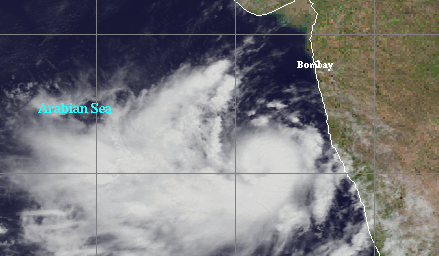Cyclone Vayu 12/06/2019 – Posted in: Daily News – Tags: Cyclone fani
CYCLONE VAYU
For: Mains
Topic covers: Cyclone – related details, Effect on Monsoon, Who give name to a cyclone, Why naming in important
News Flash
Just over a month after the powerful cyclone Fani devastated large areas of Odisha, another cyclone is headed towards India, this time towards the Gujarat coast.
Cyclone Vayu
Cyclone Vayu, it is still to develop into a cyclone and is only a deep depression as of now.
Vayu is much weaker than Fani. At its strongest, it is likely to generate winds of speed 110-120 km per hour.
Vayu, even at its most powerful, therefore would only be categorised as a “severe cyclonic storm”, while Fani was an “extremely severe cyclonic storm” and almost satisfied the conditions for classification as a “super cyclone”.
Monsoon worries
- Cyclone Vayu is likely to halt the northward progression of the monsoon for a few days.
- The arrival of the monsoon has already been delayed.
- The cyclone is expected to interfere with normal progression, by sucking all the moisture from the monsoon winds towards itself.
- Cyclones are sustained by very strong low-pressure areas at their core.
- Winds in surrounding areas are forced to rush towards these low-pressure areas.
- Low-pressure areas, when they develop near or over land, are instrumental in pulling the monsoon winds over the country as well.
- But right now, the low-pressure area at the centre of the cyclone is far more powerful than any local system that can pull the monsoon winds moving northeast.
Arabian Sea cyclones
Though cyclones are common in the June, very few of them originate in the Arabian Sea. Most of them are found in the Bay of Bengal.
In the last 120 years for which records are available, just about 14% of all cyclonic storms, and 23% of severe cyclones, around India have occurred in the Arabian Sea.
Arabian Sea cyclones are also relatively weak compared to those emerging in the Bay of Bengal.
Cyclone
Cyclone is a large system of winds that circulates about a centre of low atmospheric pressure in a counterclockwise direction north of the Equator and in a clockwise direction to the south. Cyclonic winds move across nearly all regions of the Earth except the equatorial belt and are generally associated with rain.
Why are cyclones named?
Sometimes, there are two to three cyclones moving in one sea or ocean together. So, to identify and keep a continuous watch without getting confused, it is important to name cyclones.
To study the pattern and other research, naming is very important.
How are cyclones named?
India falls under the southern region of the world. A total of eight countries fall under this group and they give names to cyclones one by one. The countries involved are Bangladesh, India, Maldives, Myanmar, Oman, Pakistan, Sri Lanka and Thailand.
These countries name cyclones one by one, which are discussed in the meeting of all countries and then later finalised. Next, the cyclone name will be given by say Maldives and they have named one Hika. Names are decided well in advance and as in when cyclone occurs, names are given to it.
Earlier cyclonic storms were only named using female names but that has now changed.
Source: Indian Express
You can follow us on LinkedIn and for more updates related to UPSC IAS Preparation, Like our Facebook Page and subscribe our Diligent IAS Youtube Channel

